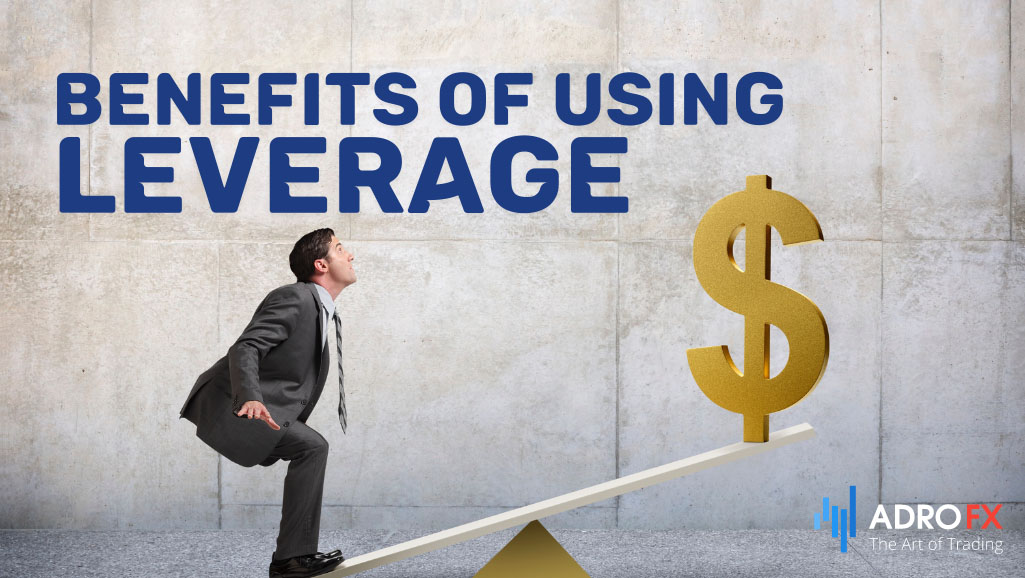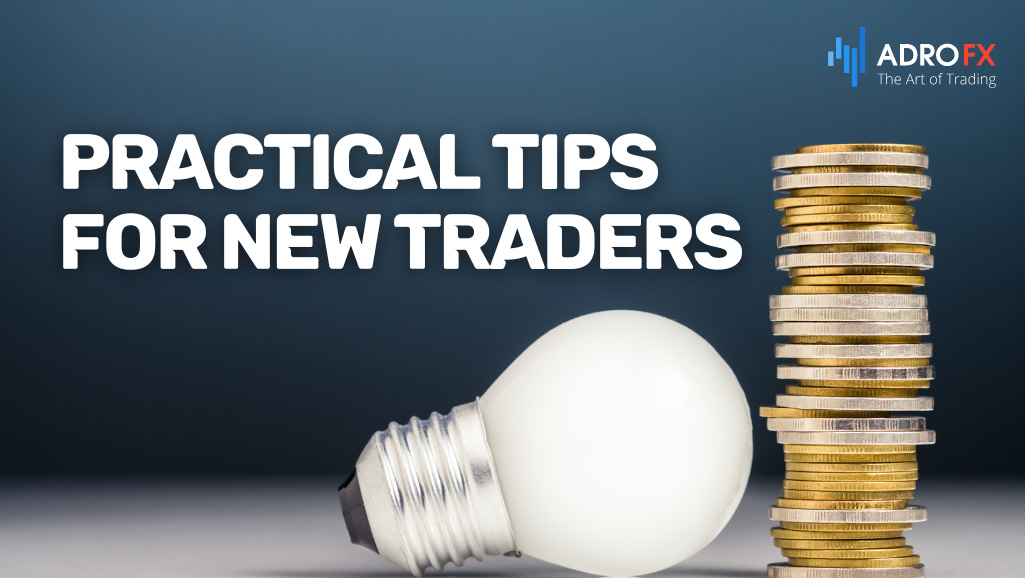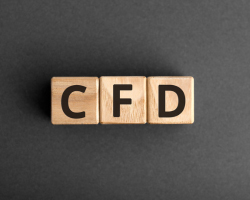The Essentials of Using Leverage Wisely in CFD Trading

Contracts for Difference (CFDs) are derivatives allowing traders to speculate on asset price movements without owning them. CFD trading offers access to markets like stocks, indices, commodities, currencies, and cryptocurrencies. Traders can profit from both rising and falling markets by buying or selling assets. The flexibility, margin trading, and potential for high returns make CFD trading appealing. However, the use of leverage - a key feature in CFD trading - can amplify both gains and risks, making it essential for traders to understand and use it wisely.
Leverage in CFD trading uses borrowed funds to increase potential returns. It allows traders to control larger positions than their own capital would permit. Leverage is expressed as a ratio, such as 10:1 or 50:1, indicating the size of the position relative to the trader's investment. For instance, with 10:1 leverage, a $1,000 investment can control a $10,000 position.
Understanding leverage is crucial for CFD traders as it impacts both profits and losses. While it can amplify gains, it can also magnify losses, making it a double-edged sword. Proper knowledge helps traders make informed decisions and use leverage strategically. Misunderstanding or misusing leverage can lead to significant losses and margin calls. Therefore, mastering leverage is essential for successful CFD trading.
What Is Leverage?
Leverage in CFD trading allows traders to open larger positions with a relatively small amount of capital through the use of margin. Margin is a fraction of the total trade value that the trader must deposit to open and maintain a leveraged position. The broker effectively lends the trader the remaining amount needed to control the full position, amplifying the trader's market exposure. For instance, with a leverage ratio of 10:1, a $1,000 investment can control a $10,000 position, resulting in significant gains or losses from small price movements.
Consider a trader buying 100 shares of a stock priced at $50 each, requiring an investment of $5,000. With 10:1 leverage, the trader only needs to provide $500 as margin. If the stock price rises to $55, the position’s value increases to $5,500, yielding a $500 profit. Conversely, if the stock price falls to $45, the position’s value decreases to $4,500, resulting in a $500 loss - equivalent to the entire initial margin.
Leverage ratios vary depending on the asset and broker policies:
- Forex: Often ranges from 50:1 to 500:1.
- Indices: Typically ranges from 10:1 to 200:1.
- Commodities: Commonly ranges from 10:1 to 100:1.
- Stocks: Generally ranges from 5:1 to 20:1.
Higher leverage ratios come with increased risk, necessitating careful consideration and robust risk management practices.

Benefits of Using Leverage in CFD Trading
Leverage in CFD trading allows traders to amplify their potential returns by controlling larger positions with a smaller amount of capital. This means that even small price movements can result in significant profits. For instance, with a 10:1 leverage ratio, a 1% increase in the underlying asset's price can yield a 10% return on the trader's initial investment. This magnification of gains makes leverage an attractive tool for traders aiming for higher returns. Additionally, leverage enables traders to take larger positions without committing a substantial amount of their own money, making it particularly beneficial for those with limited capital. A trader with $1,000 can control a $10,000 position with a 10:1 leverage ratio, significantly increasing market exposure and potential profit. Moreover, leverage provides the flexibility to diversify trading portfolios across multiple assets and markets. By using leverage to allocate smaller amounts of capital to individual trades, traders can spread their investments across a variety of instruments such as stocks, commodities, indices, and forex pairs. This diversification helps mitigate risk, as losses in one position may be offset by gains in another, leading to a more balanced and resilient trading strategy.
Risks Associated with Leverage
While leverage can amplify profits, it can also magnify losses. A leveraged position means that even small adverse price movements can lead to substantial losses. For instance, with a 10:1 leverage ratio, a 1% decline in the asset's price results in a 10% loss on the trader's initial investment. This potential for significant losses underscores the importance of careful risk management when trading with leverage. Market volatility can have a profound impact on leveraged positions, as sudden and unexpected price movements can quickly erode their value. Highly volatile markets increase the likelihood of adverse price movements, making leveraged positions particularly risky during periods of market turbulence. Traders must be vigilant and prepared for potential volatility to manage their leveraged positions effectively. Furthermore, when the value of a leveraged position falls below a certain threshold, traders may receive a margin call from their broker, requiring them to deposit additional funds to maintain the position. Failure to meet a margin call can result in the broker liquidating the position to cover the losses, potentially wiping out the trader's initial investment. This risk of liquidation highlights the importance of maintaining sufficient margin levels and being prepared to act quickly in response to market changes. Real-life examples, such as the 2015 Swiss franc surge, illustrate the dangers of excessive leverage. During this event, many traders who were heavily leveraged on the Swiss franc faced massive losses when the Swiss National Bank unexpectedly removed the currency peg. The dramatic appreciation of the Swiss franc against the euro led to margin calls and forced liquidations, serving as a stark reminder of the risks associated with excessive leverage and the need for prudent risk management.

How to Use Leverage Wisely
Leverage can significantly boost your trading potential, but it also raises your risk exposure. To maximize benefits while minimizing risks, it’s essential to adopt strategies that match your risk tolerance and trading goals.
- Setting Appropriate Leverage Levels Based on Risk Tolerance
Choose leverage levels that align with your risk tolerance. Assess your financial situation, trading experience, and investment goals to determine a comfortable leverage ratio. Beginners should start with lower leverage ratios until they gain more experience and confidence.
- Implementing Risk Management Strategies (e.g., Stop Loss Orders)
Effective risk management is crucial with leverage. Use Stop Loss orders to automatically close positions at predetermined loss levels, limiting potential losses. Take Profit orders can secure gains by closing positions at set profit levels. These tools help control risk exposure and prevent large, unexpected losses.
- Importance of Maintaining Sufficient Margin Levels
Maintaining sufficient margin levels is vital to avoid margin calls and forced liquidation. Monitor your margin requirements and ensure you have enough funds to cover potential losses. Regularly check your account balance and adjust positions or add funds as necessary to maintain a healthy margin level.
- Regularly Reviewing and Adjusting Leverage Levels as Needed
Regularly review and adjust your leverage levels based on changing market conditions and personal circumstances. Reduce leverage during high market volatility to mitigate risk. As you gain experience, you might choose to increase leverage. Continually reassessing ensures your leverage remains appropriate for your current trading environment and risk tolerance.
Risk Management Techniques
Effective risk management is key to successful trading, especially when using leverage. Employ robust strategies to protect your investments and navigate market complexities with confidence.
- Diversification of Trades to Spread Risk
Diversify your trades by spreading investments across different assets and markets. This reduces the impact of adverse price movements in any one asset, helping to balance your portfolio and stabilize overall performance.
- Using Technical and Fundamental Analysis to Inform Leveraged Trades
Combining technical and fundamental analysis provides valuable insights into market trends and potential price movements. Technical analysis examines price charts and indicators, while fundamental analysis focuses on economic indicators and news events. Together, these methods enhance trading decision accuracy.
- Regular Monitoring of Market Conditions and News
Stay informed about market conditions and news. Economic reports, political developments, and other events can significantly impact prices and volatility. Regular monitoring allows you to anticipate market movements and adjust strategies accordingly, mitigating risks associated with leveraged trading.
- Importance of Having a Well-Defined Trading Plan
A well-defined trading plan is essential for managing risk and maintaining discipline. Your plan should outline trading goals, risk tolerance, strategies, and rules for entering and exiting trades. Adhering to your plan helps avoid impulsive decisions and ensures consistency in your approach. Regularly review and update your plan to keep it relevant to your evolving experience and market conditions.
By implementing these risk management techniques, traders can effectively handle the complexities of leveraged trading, protect their capital, and enhance their chances of long-term success.

Practical Tips for New Traders
Entering the world of CFD trading can be daunting, especially with the added complexity of leverage. New traders should approach leveraged trading cautiously and equip themselves with the necessary knowledge and skills to manage risk effectively. Here are some practical tips to help new traders get started on the right foot.
- Starting with Lower Leverage to Understand Its Impact
New traders should begin with lower leverage ratios to understand how leverage impacts their trades. Lower leverage reduces the potential for significant losses, allowing traders to gain experience and build confidence without exposing themselves to excessive risk. As they become more comfortable with their trading strategies and market dynamics, they can gradually increase leverage in line with their growing expertise and risk tolerance.
- Using Demo Accounts to Practice Leveraged Trading
Demo accounts are an invaluable tool for new traders to practice leveraged trading without risking real money. These accounts simulate real trading environments, allowing traders to experiment with different leverage ratios, strategies, and risk management techniques. By using a demo account, traders can gain practical experience, learn from their mistakes, and refine their approach before transitioning to live trading.
- Educating Oneself Continuously About Leverage and Market Dynamics
Continuous education is key to successful trading. New traders should invest time in learning about leverage, market dynamics, and the factors influencing price movements. This includes studying technical and fundamental analysis, keeping up with financial news, and understanding economic indicators. Numerous online courses, webinars, and trading communities can provide valuable insights and support. By continuously educating themselves, traders can enhance their decision-making skills and adapt to the ever-changing market landscape.
By following these practical tips, new traders can build a solid foundation for their trading journey, effectively manage risk, and increase their chances of success in the leveraged CFD trading environment.
Conclusion
Leverage in CFD trading presents both opportunities and challenges. It allows traders to control larger positions and potentially realize higher returns, but it also amplifies risks, making proper understanding and management essential. By using leverage wisely - setting appropriate levels, implementing risk management strategies, maintaining sufficient margins, and regularly reviewing their approach - traders can harness the benefits of leverage while mitigating its inherent risks.
Effective risk management techniques, including diversification, thorough analysis, regular market monitoring, and adherence to a well-defined trading plan, are crucial for navigating the complexities of leveraged trading. For new traders, starting with lower leverage, practicing with demo accounts, and continually educating themselves about market dynamics are practical steps to build a strong foundation and increase their chances of long-term success.
By mastering leverage and employing disciplined strategies, traders can make informed decisions, protect their capital, and enhance their potential for sustained profitability in the dynamic world of CFD trading.
Overall, leverage in CFD trading is a powerful tool that requires careful handling. When used judiciously and with a thorough understanding of its risks, leverage can amplify trading opportunities and contribute to a successful trading strategy. By continuously educating themselves and adapting to market conditions, traders can optimize their leverage use and navigate the financial markets with confidence and resilience.
About AdroFx
Established in 2018, AdroFx is known for its high technology and its ability to deliver high-quality brokerage services in more than 200 countries around the world. AdroFx makes every effort to keep its customers satisfied and to meet all the trading needs of any trader. With the five types of trading accounts, we have all it takes to fit any traders` needs and styles. The company provides access to 115+ trading instruments, including currencies, metals, stocks, and cryptocurrencies, which make it possible to make the most out of trading on the financial markets. Considering all the above, AdroFx is the perfect variant for anyone who doesn't settle for less than the best.










